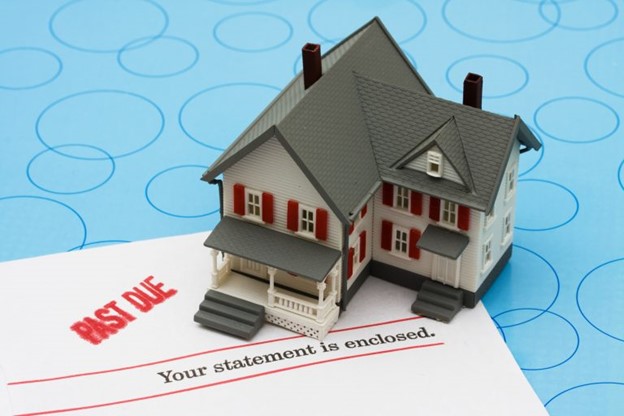UNDERSTANDING THE FORECLOSURE PROCESS

Are you at risk of foreclosure? If so, you, like thousands of others, probably have many questions.
What can I expect? What types of penalties am I up against? How long do I have until I must leave my home? The foreclosure process can seem daunting. But in this article, we’ll detail everything you need to know about the process.
What Is Foreclosure?
In case you don’t know foreclosure is, first, let’s cover what it means. Foreclosure is the process in which a lender takes back possession of an unpaid property. When a borrower defaults on their mortgage payments, the lender will foreclose. Mortgage lenders put foreclosed properties up for sale. This is mainly a means to make back the money they’ve lost from the unpaid debt on the property.
Pre-Foreclosure vs. Foreclosure
If you’ve fallen behind on your mortgage, you’re either in pre-foreclosure or foreclosure.
So, before we delve into the foreclosure process, let’s determine where you are.
Foreclosure
Your lender can begin to foreclose on your property when you’ve fallen 90 days behind on your payments. But this varies. Most lenders go longer. Some will foreclose at the 90-day mark. If you have fallen behind on your payments, you should have received a letter from your lender.
This letter should’ve notified you that you’re behind on your payments. It should’ve also warned you that they would file a Notice of Default. Already received a Notice of Default? If so, this indicates that the lender is making moves to foreclose on your property. You’ll have 90 additional days before the lender files a Notice of Trustee. Once your lender files the Notice of Trustee, your property will begin to foreclose.
Pre-Foreclosure
Haven’t yet received a Notice of Trustee? Still behind on your monthly payments?
If so, you’re considered to be in a pre-foreclosure state. So, before your lender files to foreclose, there’s still time to catch up on your loan payments. For example, you can sell your property before foreclosure. This will not only help you avoid foreclosure, but it’s one of the surest ways to protect your credit. If your home does go into pre-foreclosure, your county may list it in its public records.
This can work to your advantage if you decide to sell in a pre-foreclosure state. Real estate agents can learn more about pre-foreclosure listings online. Then they can build stronger online solutions that generate more potential buyers.
Reasons Why People Default on Their Mortgages
People can default on their home loans for a slew of reasons. It’s common among borrowers who’ve recently become unemployed. It’s also common among divorcing couples or borrowers with insurmountable debt. But believe it or not, some people foreclose on purpose. This often occurs among borrowers who can’t afford to repair their properties. This is especially common after natural disasters. Though damaging to one’s credit, foreclosure is a last resort in some cases. That’s because foreclosure can relieve borrowers who can no longer afford their mortgages.
Notice of Default
If you miss one monthly payment, you generally don’t have to worry about foreclosure. You can expect emails or phone calls from your bank or lender, however. Once you fall significantly behind on your mortgage, that’s when your lender will file a notice of default. What constitutes as significantly behind? Typically lenders file a notice of default when borrowers fail to make payments for 3 months.
Once you receive the notice of default, you’ll then have 90 days to repay what you owe.
Notice of Sale (or Notice of Trustee)
If you haven’t repaid your debt, then your lender will issue a Notice of Sale. This is also known as the Notice of Trustee. This document notifies the borrower that the lender will sell the property. It will include an auction date. The date is usually set 21 days after notification. In addition, this notice will publish in local newspapers to let potential buyers know of the auction. You’ll still have time to come up with the money. There are other foreclosure solutions, as well. But if you don’t within 5 days of the auction, you will not be able to reinstate your mortgage.
State Foreclosures
Missed mortgage payments by the borrower. A letter and notice of default from the lender. Then, a notice of trustee, and an auction. Seems simple, right? Though the foreclosure process seems straightforward, there are a lot of ins and outs on an individual basis. That’s because foreclosure laws vary state by state. For instance, the process period varies by state, and so does the redemption period. The Notice of Trustee also varies on a state basis. For example, the court acts as the trustee in New York, while a county sheriff functions as a trustee in Pennsylvania. But the nature of a foreclosure process ultimately depends on whether it’s ruled on a judicial or non-judicial level.
Judicial Foreclosure
Most foreclosures are of a judicial nature, meaning that they go through the court.
In a judicial foreclosure, the lender will file a lawsuit and ask the county court to grant a judgment. This judgment will then allow the lender to seize and sell the home.
As a defaulting borrower, you can fight the lawsuit.
First, you should always respond to the lawsuit. Failing to respond will forfeit your ability to fight the lawsuit in court. The foreclosing party, otherwise known as your lender, will receive a default judgment.
So, if you do respond to the lawsuit, your lender won’t get a default judgment. You can then fight the case in court.
Non-Judicial Foreclosure
Just like the title means, a non-judicial foreclosure doesn’t involve the court. Because of this, most non-judicial foreclosures occur rather quickly. But it also means that your lender doesn’t have to go to court to foreclose on your property. Which means you would have to file your own lawsuit to fight it.
In many states, there are both non-judicial and judicial foreclosures. Of course, it helps to look up your state’s foreclosure laws beforehand. But in case you don’t know, a non-judicial foreclosure entails two things:
A promissory note
Deed of trust
If you signed these when you originally bought your home, you’re likely up for a non-judicial foreclosure. This means your mortgage entails a power of sale clause, which allows a lender to sell when a borrower defaults. If this is the case for you, then you’ll have much less time to work with and to repay the debt if you wish to. You’ll still receive a Notice of Default. But you may also get a Notice of Sale, which may announce a sales date right away. In some states, you may be able to reinstate your mortgage by paying off your debt plus fees. In these cases, you’ll receive a deadline to do so.
But if not, your property will immediately go up for auction.
Understand the Foreclosure Process & Prepare
The foreclosure process is never an easy time. You may not know where or whom to turn to, or what the future has in store for you and your home. If you can’t come up with the money to reinstate your mortgage, don’t worry. There are many resources available to help you through this time.
- USA TODAY classifieds

